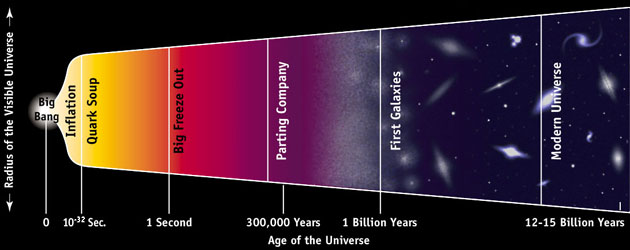Astrophysical & Planetary Sciences: ASTR 2010-001, Spring 2002
MODERN COSMOLOGY: Origin and Structure of the Universe
Juri TOOMRE, Kevin McGOULDRICK
Mon, Wed, Fri, 2:00pm-2:50pm, Duane G125


Course homepage: http://lcd-www.colorado.edu/astr2010
Instructors:
Prof. Juri Toomre, JILA Tower A-606, (303) 492-7854,
jurit@solarz.colorado.edu
Office hours: Mon, Wed 3-4pm; Thur 10am-noon; or by appointment.
Kevin McGouldrick, Teaching Assistant, Duane D-220, (303) 492-8207,
kevinm@solarz.colorado.edu
Office hours: Wed 10am-noon; Thur 1-3pm; or by appointment.
Description: This is going to be a very non-mathematical description of the history of modern cosmology and what the modern cosmology is all about. There are no prerequisites, all required pieces of physics will be covered in class. We will discuss the Big Bang; the age, size and structure of the universe; the origin of the elements and of stars, galaxies, planetary systems and life. We will travel through time to meet the renowned scientists of the past, and follow the development of cosmology from ancient mythology to the Big Bang theory. We will talk about the Big Bang, and whether the Bang was actually Big. We will happily avoid the Big Crunch, and look ahead in time to glimpse at the possible end states of the universe. On our way, we will cut a path through the entangled space and time of Special Relativity, and will barely escape falling into black holes of General Relativity. We will also discover that the black holes are often not black at all, and that even if we fall into one, we should not loose all hope (well, at least if we are elementary particles...).
Texts: 1: `Foundations of Modern Cosmology', by John Hawley & Katherine Holcomb, Oxford University Press, 1998. 2: `A Short History of the Universe', by Joseph Silk, Scientific American Library & Freeman, 1994. 3: `Cosmology: A Very Short Introduction', by Peter Coles, Oxford University Press, 2001. Hawley & Holcomb (H&H) is the primary course text, with Silk and Coles both reading very well and providing complementary and important perspectives.
Shows: The course utilizes four shows at Fiske Planetarium during class time (Wed, Feb 20; Wed, Mar 13; Wed, Apr 10; Wed, May 1) and involves extensive use of computer demonstrations and visual material.
Lecture Notes, Homeworks, Exams: The web site will provide compact text versions of all lectures, typically one week in advance, so you can annotate those copies during lectures. There will be about five homeworks that will count for 30% of the overall grade, two midterm exams (on Fri, Feb 15; Fri, Apr 5; each 20% of grade), and a final exam (on Wed, May 8, 4:30pm; worth 30%). Exams are closed book, open for handwritten notes.